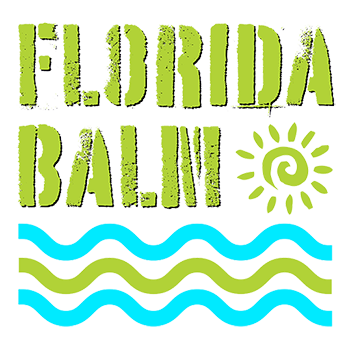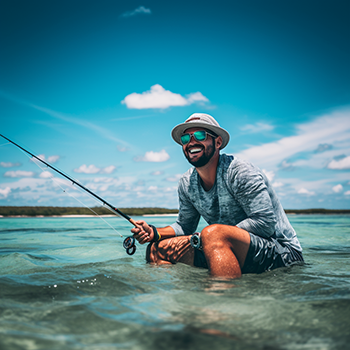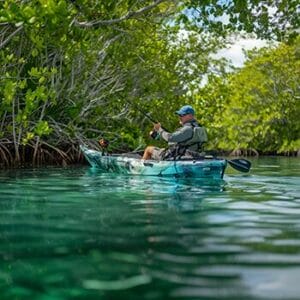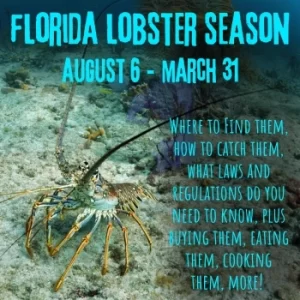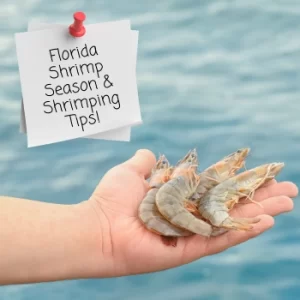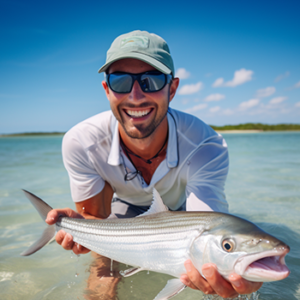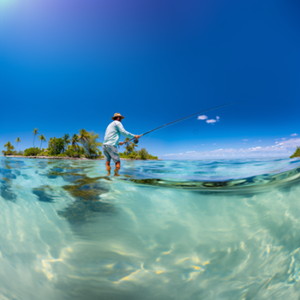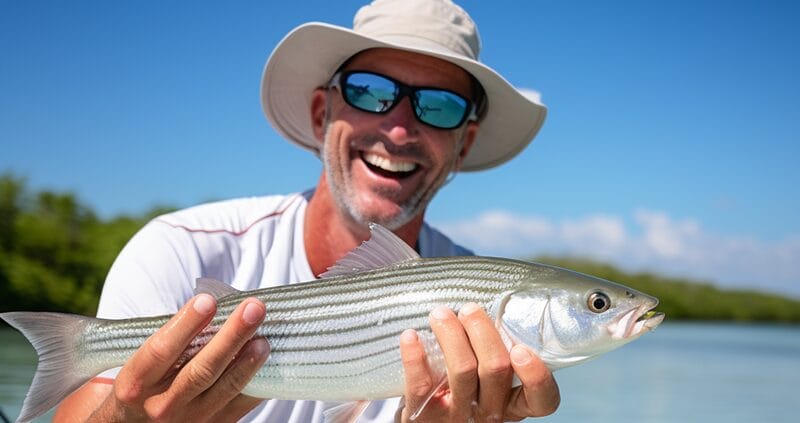
Florida Bonefishing: Get Hooked on the Adventure
Florida bonefishing is not just for experts, but for anyone with a passion for the outdoors and a thirst for challenge.
Surrounded by shallow flats and crystal-clear waters, bonefishing for the wily “grey ghosts” are a unique adventure. Named for their silver bodies and way too many small bones to want to eat… bonefish are prized for their incredible fight.
That’s right, bonefish aren’t for eating… they are catch and release. And whether you’re a seasoned angler looking for a new challenge or a curious beginner, bonefishing offers an unforgettable experience that combines the thrill of the catch with the beauty of the Florida ecosystem.
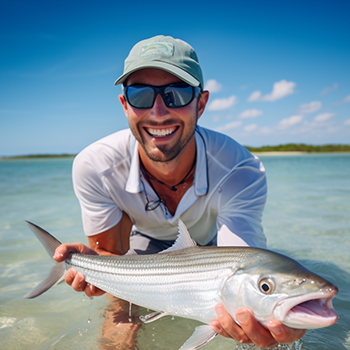
What is Bonefishing and Why You May Love It
Bonefishing is the pursuit of bonefish (Albula vulpes). They prefer shallow flats and backcountry waters, offering a calm scenic often peaceful backdrop for this type of fishing adventure.
These silvery fish are prized for their incredible fight offering a particular fishing challenge. Despite their size (averaging around 3 pounds), bonefish are known for powerful bursts of speed and acrobatic jumps, making them a true challenge for anglers.
Spotting them is another feat – bonefish are masters of camouflage, often blending seamlessly with the sandy bottom.
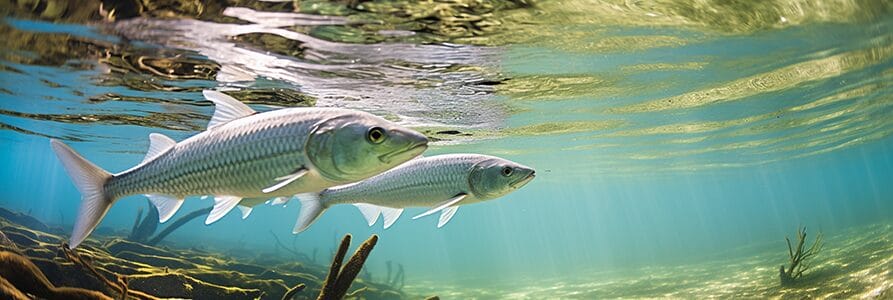
Two Approaches to Bonefishing
There are two main approaches to bonefishing: fly fishing and spin fishing.
- Fly Fishing: The classic method, fly fishing requires a specialized fly rod, reel, and flies that imitate the bonefish’s natural prey. This technique is known for its finesse and requires practice for accurate casting.
- Spin Fishing: A more accessible option, spin fishing uses a spinning rod and reel with lures or live bait. It’s a great way to get started on your bonefishing journey.
Best Florida Bonefishing Locations
The good news is, you have plenty of options for finding bonefish in Florida! Here are some hotspots:
- Florida Keys: Arguably the bonefishing capital of Florida, the Keys offer an abundance of shallow flats and excellent guides to help you navigate the waters.
- Miami and Fort Lauderdale: While not as plentiful as the Keys, bonefish can be found near these major cities, making them a good option for a shorter trip.
- Southwest Florida: The flats around Tampa Bay and Everglades National Park provide a unique bonefishing experience.
Conservation and Sustainability of Bonefishing in Florida
Conservation and sustainability are crucial for the long-term health of bonefish populations in Florida. Bonefish are a valuable resource and play an important role in the local ecosystem.
Efforts are being made to protect bonefish populations in Florida. The Bonefish & Tarpon Trust (BTT) is a non-profit organization dedicated to conserving and enhancing bonefish, tarpon, and permit fisheries.
They conduct research, advocate for conservation measures, and educate anglers about sustainable fishing practices.
Anglers can also help preserve bonefish populations by practicing catch-and-release fishing.
When catching bonefish, handle them with care and release them quickly to minimize stress. Avoid using overly large hooks or heavy tackle, as this can cause unnecessary harm to the fish.
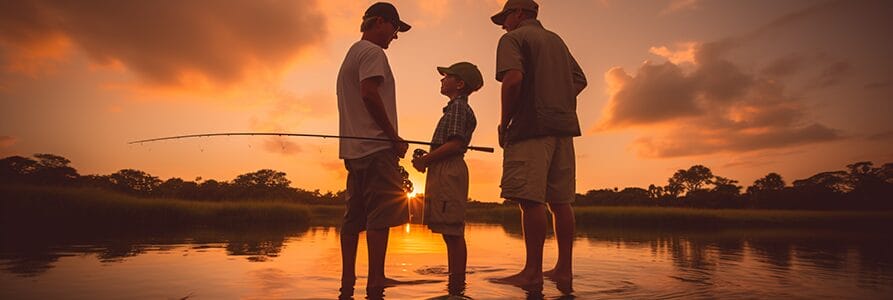
Is Bonefishing Good for Kids?
Bonefishing can be enjoyed by kids, but it depends on several factors:
- Age: Younger children (under 10) might find the patience and focus required for bonefishing challenging.
- Interest: A child’s genuine interest in fishing and the outdoors is crucial for their enjoyment.
- Experience: Prior fishing experience, even with other techniques, can be helpful.
Here’s why bonefishing might not be ideal for young children:
- Technical Aspects: Bonefishing requires specific techniques like casting and reading the water, which can be difficult for beginners.
- Patience: Spotting and waiting for bonefish can take time, which might not appeal to younger kids with shorter attention spans.
- Physical Demands: Standing for long periods and casting a rod can be tiring for young children.
However, with the right approach, bonefishing can be a fun and educational experience for older kids (think teenagers or pre-teens). Here are some tips for a successful bonefishing trip with kids:
- Start with shorter trips: Keep the initial outings short and engaging to avoid frustration.
- Focus on fun: Make it a positive experience by highlighting the beauty of the environment and the excitement of spotting wildlife.
- Keep it simple: Use spin fishing with light tackle to make casting easier. Live bait can be more effective than lures for beginners.
- Hire a patient guide: An experienced guide can tailor the experience to a child’s skill level and keep them engaged.
Ultimately, the decision of whether bonefishing is suitable for your child depends on their individual personality and interest level.
Bonefishing is addictive and can make memories that last a lifetime.
Bonefishing Tips
Casting techniques are crucial for bonefishing in Florida. The ability to make accurate and long casts is essential for presenting flies to bonefish.
Practice your casting skills before your trip to ensure that you can make the most of your time on the water.
When casting to bonefish, it’s important to lead the fish with your fly. Bonefish have a keen sense of hearing and can detect the sound of a fly hitting the water.
By casting ahead of the fish, you can avoid spooking them and increase your chances of a successful hookup.
Spotting bonefish in the water is another important skill for bonefishing in Florida. Look for subtle movements or shadows on the flats, as these are often signs of feeding bonefish.
Polarized sunglasses are essential for spotting fish, as they reduce glare and allow you to see beneath the surface.
No products found.
Once you’ve spotted a bonefish, it’s important to approach them quietly and slowly.
Bonefish are easily spooked, so any sudden movements or loud noises can send them fleeing. Take your time and make deliberate movements to avoid scaring the fish.
When it comes to hooking and landing bonefish, patience is key. Bonefish are known for their blistering runs and acrobatic jumps, so be prepared for an exciting fight.
Keep steady pressure on the fish and let them tire themselves out before attempting to land them.
Making the Most of Your Florida Bonefishing Adventure
Now that you have the basics, here are some additional tips for a successful Florida bonefishing trip:
- Consider a Guide: While not essential, hiring an experienced guide can be a game-changer. They’ll know the best spots to find bonefish, teach you valuable techniques, and help you navigate the flats safely.
- Practice Makes Perfect: Don’t underestimate the importance of practice. Before your trip, spend time in open areas getting comfortable casting your fly rod and mastering your stripping techniques.
- Respect the Fishery: Bonefish are a catch-and-release species in Florida. Handle them with care and ensure their survival for future generations of anglers.
Ready to Reel in the Challenge?
Florida offers some of the best bonefishing in the world. From the legendary flats of the Florida Keys to the backcountry waters of southwest Florida, there’s a perfect bonefishing adventure waiting for you.
So grab your rod, hat, sunglasses, and a sense of adventure – Florida’s bonefish are waiting to test your skills and leave you with memories that will last a lifetime!
FAQs
What is bonefishing?
Bonefishing is a type of fishing that involves targeting bonefish, a species of fish found in shallow tropical waters. It is a popular sport in the Florida Keys.
What are some tips for bonefishing in Florida?
Some tips for bonefishing in the Florida Keys include using light tackle, fishing during the early morning or late afternoon, looking for shallow flats with clear water, and using a stealthy approach.
What kind of gear do I need for bonefishing in the Florida Keys?
For bonefishing in Florida, you will need a lightweight rod and reel, a floating line, a leader, and a selection of bonefish flies. Polarized sunglasses and a hat are also recommended.
What is the best time of year for bonefishing in the Florida Keys?
The best time of year for bonefishing in the Florida Keys is from March to June and from September to November. During these months, the weather is mild and the water is clear, making it easier to spot bonefish.
Do I need a fishing license to go bonefishing in Florida?
Yes, you will need a fishing license to go bonefishing in Florida. You can purchase a license online or at a local tackle shop.
As an Amazon Associate I earn from qualifying purchases at no additional cost to you.
You may also like…
